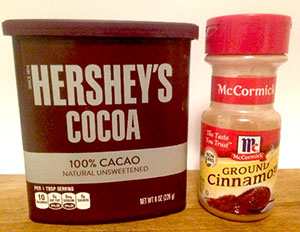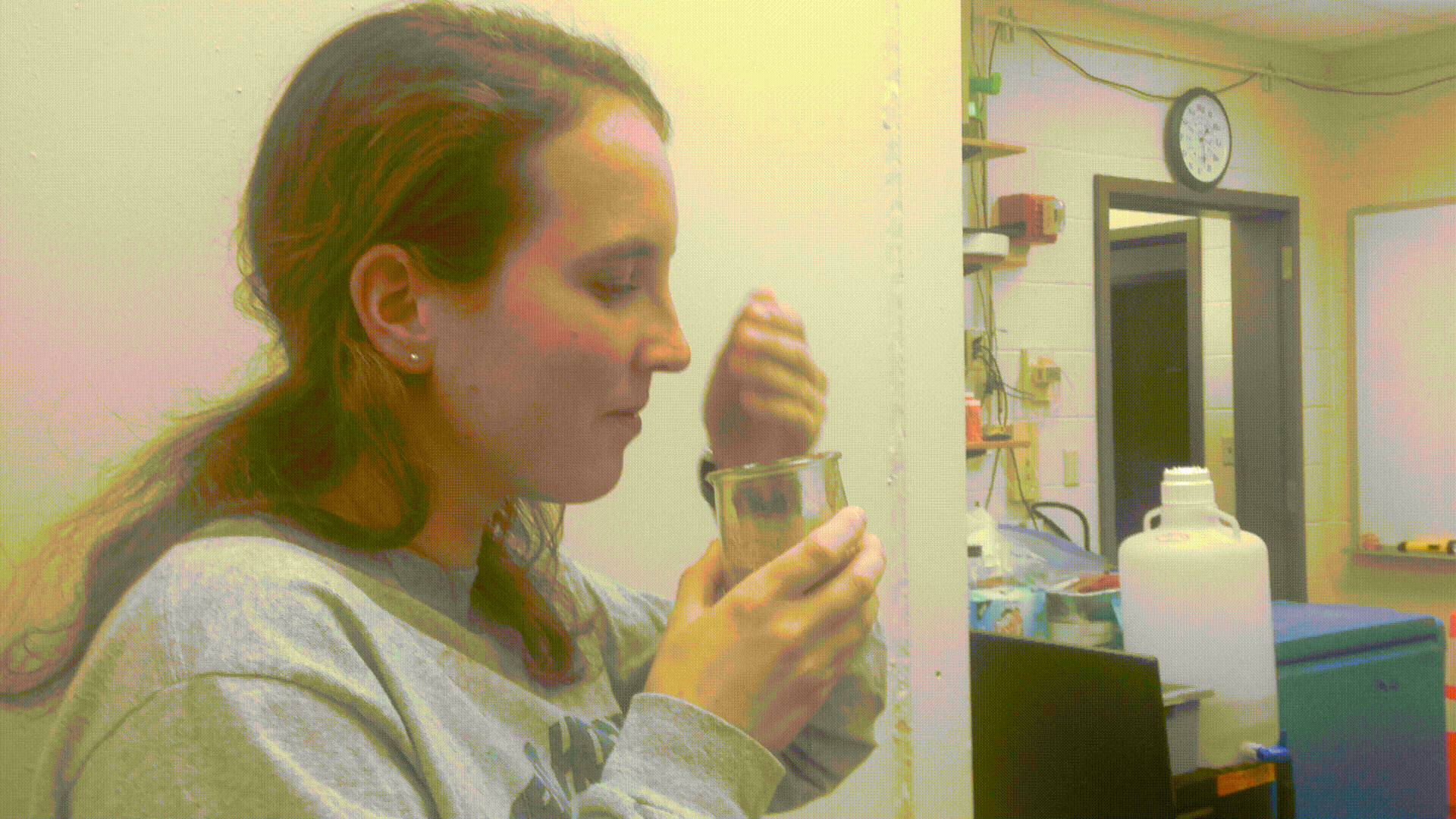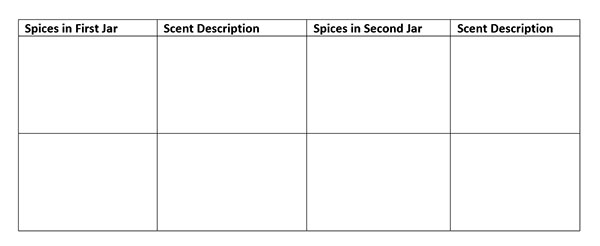

Have you ever been in a room when someone walks in and says it smells good, and yet you smell nothing? Or noticed how the smell of a candle seems to fade away even though the candle keeps burning? In this experiment we will test how sensitive your nose is and its ability to distinguish scents. |
|
| WHAT YOU WILL NEED | |
|
 |
THE EXPERIMENT |
|
Put about a tablespoon of cinnamon in one container and the same amount of cocoa powder in another container. In the third container mix ~1/2 tablespoon of cinnamon and ~1/2 tablespoon of cocoa powder together. To properly smell the scents, hold the container slightly away from your nose and use your hand to waft the smell towards your nose being careful not to inhale any of the powder. Like this: |
|
 |
|
As you are smelling the cinnamon, fill out the first two columns in the first row of the table below. Take one last whiff of the cinnamon and then smell the container with both the cocoa and cinnamon in it the same way you smelled the first container. What do you smell in this container? Can you smell all components of the mixture? Make your observations in the third and fourth columns of the table. |
|
|
|
Repeat the experiment, except this time smell the cocoa container for thirty seconds followed immediately by the container with the mixture of substances. Remember to use proper wafting technique and note down your observations in the second row of the table. What do you smell in each container? Record your observations in the table, this time using the second row. Did you notice anything unexpected in what you smelled? Were you always able to distinguish all the scents? Does the order of what you smell affect what you are able to smell in the mixed container? Consider discussing your observations with a friend! In most cases, after smelling one scent for a long time you will have a hard time identifying the substance when it is suddenly mixed with another smell. So, if you had just spent a long time smelling cocoa, you most likely smell only the cinnamon in the mixed container. In a way, your nose has become exhausted, or gotten used to, the strong scent of cocoa. This occurrence in called olfactory fatigue. This phenomenon occurs because your brain shuts off those receptors in your nose so that your nervous system does not become overwhelmed. That is why, when you are in a room for a long time, you may not notice the smell of the room that a new person walking in will smell quite strongly. Your brain has decided that it can ignore the long-lasting scent to allow you to better detect any new scents. |
|
| FURTHER EXPLORATION | |
To continue the experiment, you can also have someone who doesn’t know what is in the containers try the same experiment you did. Have them sniff one container using the proper technique with either cocoa or cinnamon for thirty seconds. Then ask them to smell the second container with the mix of compounds. Do they name just one compound or are they still able to identify both compounds in the container? Do you have the same experience when using different spices? Do you think you can find other scents that may interact so that when you smell the second container you don’t smell either scent strongly? What other questions are you interested in? How else could you modify this experiment to learn something new? |
|
SOURCES & FURTHER READING |
|
http://fun-science.org.uk/smell-test-experiment/ |
|
